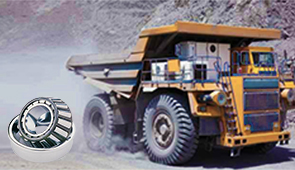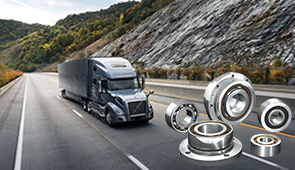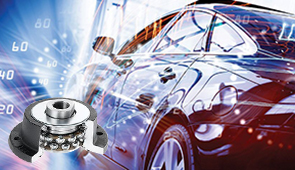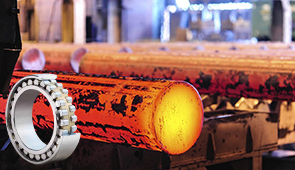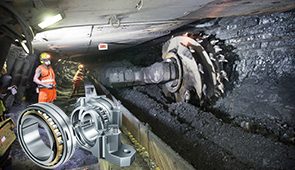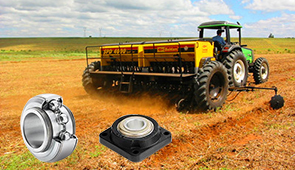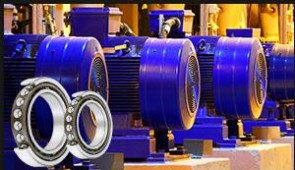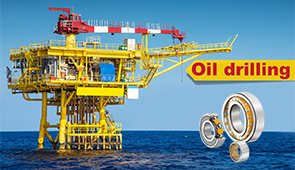How to Choose the Right Cam Follower Types
Such a wide range of machines hinges on a singular device. This cam follower meshes with rotary motion and transforms it into a straightforward linear movement or regulates the accurate movement of machine parts. Depending on the operational requirement, these devices are available in many types and are suitable for different applications and industries. Since cam followers are used in manufacturing, robotics, and automotive industries, to name a few, it is critical to note the different types of cam followers as this directly relates to the design choice for effectiveness, sustainability, and usability. This guide’s objective is to cover a detailed overview of the different types of cam followers, their distinguishing features, and aspects that one should look for when making their cam selection so that they are well prepared for their tasks and equipment requirements.
What are cam followers, and how do they work?
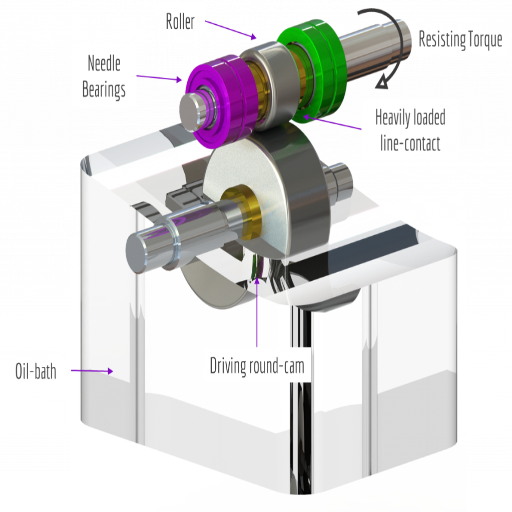
Understanding the working principle of cam and follower mechanisms
The cam and follower mechanisms are paramount in the machine systems for changing rotary motion into linear or reciprocating motion. The cam is generally a non-circular rotating object that pushes the follower, who gets pushed according to the cam profile to generate the needed output movement. This function has been widely implemented in automobile engines, packaging machines, and automation systems.
Cam Profile – The shape of the cam determines the follower motion. Some of the most common profiles are circular, pear, and heart-shaped.
Follower Type—Different followers are flat-faced, roller, mushroom, etc. These types of followers alter contact stress and enhance the smoothness of the motion.
Lift or Stroke – The maximum distance the follower moves depends upon the cam’s geometry.
Velocity and Acceleration – These are essential for smooth movement and minimizing or preventing excessive wear and vibration. They depend on the cam profile and rotation speed.
Material Selection—Cams and flowers must be made of strong, hardened steel materials to withstand wear and high stress.
Load Capacity – The follower must be built to accommodate the cone load passed by the cam without distortion and fracture.
When interacting with such parameters, one must be aware of their interdependencies to guarantee the smooth and dependable operation of cam and follower mechanisms in the given machines.
The role of followers in achieving desired motion
In my opinion, followers are responsible for realizing the cam-follower system motion. As an interface between the cam and machine elements, the follower interprets the rotary or linear movement of the cam into the action required by the machine. Many design guidelines must be followed to achieve the desired performance.
Surface Hardness and Material: Followers are expected to be manufactured with materials and surfaces such as hardened steel, which provide wear resistance and can withstand the forces coming from the cam.
Shape and Profile: The follower’s profile, such as flat, roller, or knife-edge, must conform to the intended motion as appropriate for the application to ensure proper contact and low friction.
Load Handling: The design load must be sufficient to withstand the working conditions without undergoing distortion or failure; this enhances performance and life.
Lubrication and Friction Management: Oiling or surface treatment is necessary to reduce wear and improve efficiency in contact areas prone to wear.
Considering these parameters, followers can convert the cam’s written path or motion into a practical output, improving the system’s accuracy and efficiency.
What are the main types of cam followers?
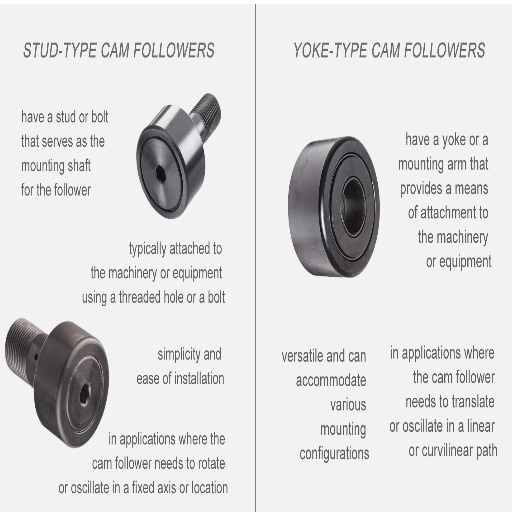
Knife-edge, roller, and flat-faced followers: Key differences
In my opinion, knife-edge, flat-faced, and roller followers are similar, given the differences in their design, functions, and application, which depend on specific numerical values:
Knife-edge followers: These have a longitudinal camber angle with a cautionary sharp edge. They work particularly well under light loads while retaining reasonable motion control. However, they have very low durability since everyday contact stresses at the edge are high enough to wear them out with time. Hence, under heavy-load applications, their serviceable life is low.
Roller followers: These are very soft-contact bodies with rollers at the point of contact with the cam, which gives them a relatively smoother surface. They are suited for applications with high input and output speeds, including high loads due to wear and friction reduction.
Flat-faced followers: The cam and the flat-faced follower have a flat contact area and can only operate by solving the torque issue by angle service contact with the cam. They are used primarily for two extensive area contacts and low-speed, heavy loads. Though, compared to roller followers, these exhibit higher friction, they necessitate much more lubrication.
Every follower type works best in certain conditions. It is crucial to consider combined factors of lubrication type and frequency, performance characteristics, and intended purpose to choose one.
Cylindrical and spherical followers: When to use each
The cylindrical followers are appropriate for applications that require a high load capacity and precise linear movement parallel to the. They engage with the cam on a larger surface area, which allows them to take heavy loads and guarantees stability in operations where transverse forces are negligible. A few critical engineering parameters are reduced surface pressure owing to the large area of contact, a better distribution of loads, and the usual quantity of lubrication needed to reduce friction and wear.
In contrast, spherical followers are better suited for systems that need free angular alignment or where there is an angular offset between the components within the systems. They can fit a suitable cam surface so that when part of them rotates, the part that is still not rotated can still contact the cam. The technical parameters of spherical followers relate mainly to their ability to accommodate angular distortion, reduction in stress concentration on the contact area, and inability to handle as much load as cylindrical followers do.
When selecting cylindrical and spherical followers, a fully integrated engineering solution should be followed, with particular attention to load capacity, alignment, and motion accuracy to conform to the selected component’s system requirements and operations conditions.
Stud type cam followers and their applications
Due to their space-saving features and functional configuration, stud type cam followers are also one of the most commonly used types of cam followers. I suppose the main benefit of using them is how straightforward their construction is since there is no extra housing required that can complicate the use of a stud type. These cam followers are frequently used in systems that need periodic or constant movement, such as conveyor systems, automatic machines, and indexer devices. Key technical parameters for stud-type cam followers include:
Load Capacity—They allow pre-determined radial and axial loads, which may vary depending on the manufacturer and the model. Load ratings, for example, should be suitable for the target machine’s expected activities.
Outer Diameter and Stud Dimensions – These are essential components that guarantee the mounting surface meets operational requirements.
Material and Coatings – Made of high-strength steel with optional corrosion-resistant coatings to increase life span, especially in tough conditions.
Lubrication Options – Some stud-type cam followers possess wide Applications and are maintenance-free due to built-in lubrication ports or sealed design.
Rotational Speed is intended to fit specific ranges of rpm, which must be confirmed according to the system’s speed needs.
By taking these parameters into account, I am confident that the chosen type of studded cam follower comports with the technical and operational requirements of the application in a reliable and enduring helpful manner.
How do I choose the exemplary cam follower for my application?
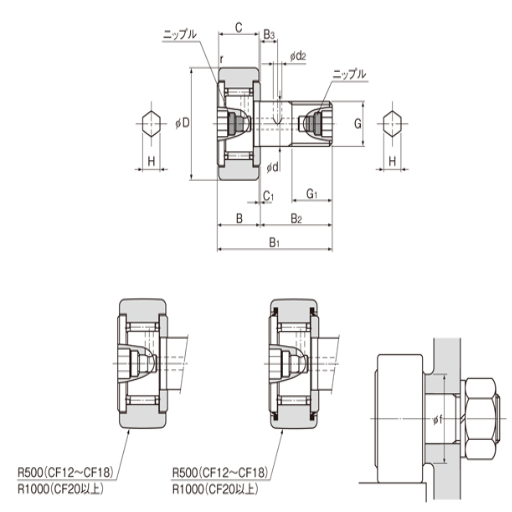
Factors to consider when selecting a cam follower
I consider many things when choosing the exemplary cam follower for my application. Some of the factors that I deem critical for satisfying the required function, use, and reliability are as follows:
Load Bearing Capacity – I start by estimating the radial and axial loads within the system. This requirement ensures that the cam follower receives these loads without deformation or severe abrasion, allowing it to function perfectly for a long time.
Working Conditions – Conditions, e.g., temperature levels, contamination, and moisture content, determine the specific material to address or resist extreme conditions. For example, stainless steel or covered cam followers would suit very harsh conditions.)
Rotational Velocity – I assess the cam follower’s intended use, average, and maximum rpm to which the cam follower will be exposed. Where there are high speeds, they will need extraordinary lubrication or unique designs to maintain efficiency and reduce wear.
Installation Considerations – I consider the space limitation and type of mounting that will be done, whether stud type or yoke type and choose a system or design that will be installed without any complications.
Accuracy and Precision – I ensure that the cam follower has a tiny run out and performs consistently for high-precision applications.
These technical parameters of a cam follower, alongside the system’s requirements, increase my faith that a cam follower is adding value to the system while preventing chronic failures.
Matching cam profiles with appropriate follower types
When I match cam profiles with different followers, I always strive to maximize coverage of several technical parameters that my particular goal requires. I’ll describe how I do this:
Cam Profile Shape- I consider the shape of the cam profile, whether it is flat, cylindrical, or contoured, so I can delegate types of followers accordingly. High motion variability in complex cam profiles is smoother while engaging roller followers, thus wearing less.
Load Requirements- I consider the dynamic and static forces that the follower will bear. For applications requiring large loads, stress is fairly distributed through needle roller or heavy-duty cam followers whose deformation capabilities are minimal.
Operating Speed—The speed of operation is critical. If the system operates at higher speeds, the operating parts of cyclists designed to reduce friction must be selected to ensure performance consistency without overheating.
Clearance and Contact Point – It is crucial to target a particular contact point on the cam to give accurate motion control. So, the follower type, spherical or flat-faced, must result in either a single-point contact or a broader area contact as required.
Environmental Conditions—The operating environment should also be considered. If the application is prone to dirt and dust, sealed or corrosion-resistant cam followers must be preferred.
I’m Dirty Usage: Motivated Monkey Says The World Is Mine Only By Money Do I Instil A Passion To Behind The Five Olympian Rings Explained.
Evaluating load capacity and speed requirements
I pay special attention to unloaded and rotating speed requirements by considering cam follower load to ensure its acceptable unloading speed and operating conditions. Regarding load capacity, two load types are considered: static and dynamic. For instance, the static load rating should be greater than the thrust maximum force when the system is at rest. In contrast, dynamic load rating should withstand the repetitive forces encountered during motion. This has been established in engineering practice as an essential consideration when selecting a load-bearing component, usually supplied by the manufacturer.
Regarding speed requirements, I look into the type of application, the lowest or the highest linear velocity, or the lowest or the highest rotational velocity of the component in question. This requires analysis of such variables as the type of bearing used in the follower, the type of lubrication applied, and the amount of heat produced due to friction since as the speed increases, so does the heat value. High-speed applications may favor rolling element bearings with high-quality grease, but applications requiring lower-end speeds may not be favorable for plain bearings. Matching the load and speed conditions with suitable technical factors assures me of the reliability of the assembled parts for the anticipated application.
What are the benefits of using roller cam followers?
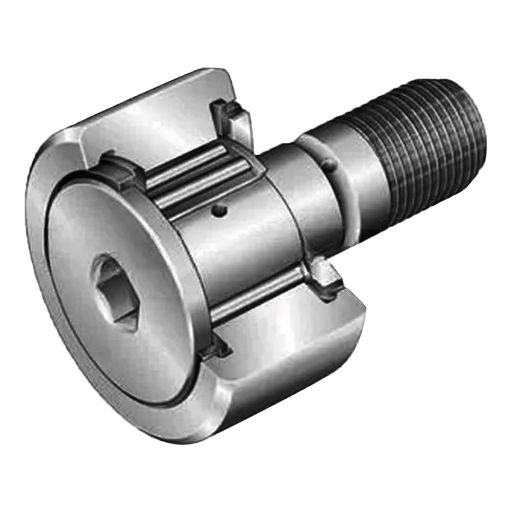
Advantages of needle roller bearings in cam followers
Needle roller bearings have noteworthy advantages when used in cam followers, especially when dealing with small-sized and high-load applications. To begin with, their configuration enables them to have a greater capacity for load since the elongated rollers contact larger areas. This makes them ideal for applications that have high radial loads. Secondly, the dense configuration saves space, essential for dimensionally constrained systems. Moreover, rolling motion with the aid of the needle roller bearings decreases friction and wear, thereby improving the life span and effectiveness of the system. Key Technical Parameters Justifying These Advantages:
Load Capacity – The ability to carry heavy loads is enhanced due to the distribution of the load over a larger specific contact surface per roller, hence reducing stress concentration.
Compactness – Because of the slender diameter of needle rollers, the total diameter of the needle roller bearings can be made smaller, which is suitable for applications where space is a factor.
Reduced Friction—Slipping contact causes more friction than rolling motion at the rollers and the raceway, increasing heat generation and wear rate.
Durability and Longevity – High-strength steel for rollers and races improves fatigue properties to provide reliability under repeated stress.
By considering these attributes, I can select the most appropriate cam followers for specific tasks, ensuring the durability and efficiency of these cam followers.
Reducing friction and wear with roller followers
To enhance the development or, better yet, overcome the challenges that come with friction and wear-on roller followers, I zero in on the drive components that meet the above technical requirements; in doing this, I am upholding the effectiveness and durability standards. Among the important ones are:
Material Selection—Considering the specific roles involved, I prefer hardened steel for the rollers and raceways. This material has an excellent fatigue property that allows it to sustain repeated load applications without breaking.
Surface Finish—Employing polished or finely machined surface finishes decreases the size of rough contact points, lowering the coefficient of friction. This, in turn, helps control high wear and tear rates.
Lubrication—Because of the nature of the moving parts, judicious lubrication is essential. Good-quality grease or oil facilitates the maintenance of a film of grease or oil, reducing metal-to-metal contact.
Load Capacity – Before deploying the components in question, it is essential to consider the load rating and whether the application roll follower would bear any stress, for this allows the components not to undergo stress, not to mention wear and tear. Elements such as dynamic and static load ratings play a central role in the minimum stresses of the components in question.
Operating Speed – While in actual use, physical components rotate which in turn generates heat in the equipment, thus employing the maximum speed for the components is prudent for it allows the components to work smoothly without overheating and hence averting excessive wear out.
With these measures in place, I can successfully tackle the problems of minimizing friction, not forgetting the rollout aspect in deploying roller followers in practice.
Applications where roller cam followers excel
Roller cam followers are the most appropriate choice for torquey applications due to their strength, low friction, and excellent resistance to wear and tear. Here are some key areas where they show excellent performance, along with the technical parameters that motivate their applicability:
Manufacturing Equipment—Automated production lines and assembly machines extensively utilize roller cam followers. Their large load capacities (quasi-static and dynamic load ratings) make them dependable in cyclic, high-force tasks. Moreover, almost all followers can operate at high speeds, enabling them to function under fast working conditions.
Conveyor Systems—These components are ideal for conveyor systems that require constant movement, automatic extensions, and reduced wear forces. Rolling follows the right cam shape, which allows for better lubrication management and lower metal-to-metal contact. This translates to reduced wear and tear and more uptime for the material handling system.
Robotics and CNC Machines—Roller cam followers allow motion transfer with precise alignment and low misalignment, which is critical in most robotic applications. These applications require high precision and the ability to handle shifting forces and heavy loads while moving at incredible speeds.
Heavy-Duty Machinery – The efficacy of roller cam followers in agriculture, mining, and construction machinery originates from their strength and resistance to wear and abrasion. Since these industries often demand very rough working settings with high shock loads, such scenarios can be remedied by choosing cam followers with sufficient radial and axial load ratings.
Textile Machinery—The accurate and seamless use of roller cam followers is crucial for the textile industry during complicated workpiece movements and the threading process during production.
My knowledge of the technologies’ requirements and my choice of roller cam followers with the required strength class, construction material, and lubrication methods allow me to achieve the desired performance in different industries. These components are beneficial in cases where accuracy, strength, and efficiency are key requirements.
What are typical applications for cam and follower mechanisms?
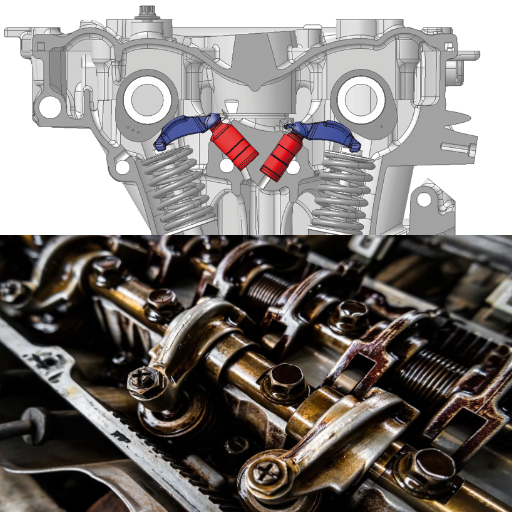
Use of cam followers in internal combustion engines
Cam followers assist in opening and closing the valves of an internal combustion engine. Such cam followers get attached to a camshaft to form coupling and adjust the timings of the engine. However, some of the technical matters that I pay attention to include:
Load Capacity – During the rapid movement of the valves, cam followers are subjected to both dynamic and static loads, which can be excessive. The units’ diesel-rated radial and axial load stamps are enough to ensure durability.
Material Construction – Cam followers must employ heat-treated or alloy steel, which can withstand the extreme temperature and friction otherwise encountered in an engine.
Lubrication—Proper lubrication, such as high-temperature grease, is helpful as it tends to reduce friction, which causes the cam follower to wear.
Surface Hardness—Continuous friction with the camshaft can cause cam followers to wear. A solution is to have a hard sheath over the cam followers.
For this reason, any parameters identified are adequate to ensure efficient and reliable working of the cam followers in internal combustion engines under extreme conditions while ensuring smooth engine firing.
Industrial machinery and automation applications
In the cases of industrial machines and automation, my selection of cam followers focuses on recurrence, reliability, amperage, and efficiency, and these major technical factors follow each other.
Load Capacity—Industrial machines and automated systems commonly encounter high radial and axial forces during operation. Hence, I opt for cam followers with appropriate static and dynamic load ratings that can withstand repetitive cycles and workloads.
Material Construction—I also verify that cam followers are made from quality alloy or heat-treated steel for these applications. This makes the components more wear-resistant and capable of performing even after long working hours due to heavy friction.
Lubrication – Sufficient lubrication is paramount to restrain a part from friction and wear in automatic operations. I depend on optimal lubricants for high-speed operations and are thermally stable in quality to prolong service life and maintenance needs.
Corrosion Resistance—Another concern in these applications is protecting against destruction, particularly in regions with high humidity or chemicals. Therefore, I prefer cam followers coated with materials or other substances rated for these applications.
Strength of the Outer Layer—The hardened surface of a case-hardened cam follower is necessary for all engine applications. The cam followers have a high level of surface wear, which causes fatigue in movement due to repetitive push and contact thrusts to mechanical systems coverage.
So, by considering these parameters and choosing the cam follower appropriately, one can be assured of smooth operations uninterrupted for an extended period on industrial and automated systems. These considerations directly translate to higher productivity and reduced downtime.
Specialized uses in various engineering fields
Regarding general and particular functions in various engineering disciplines, I modify the choice of cam followers based on the requirement of every specific function. Here, I shall attempt to fulfill these needs using short answers:
Aerospace Engineering
Technical Parameters: Low-weight materials such as Titanium or aluminum alloys, heat-up to the temperatures withstand, and accurate dimensions.
Justification: The aerospace industry requires the items to be as light as possible for fuel efficiency and items that can be exposed to high temperatures and significant stresses.
Automotive Engineering
Technical Parameters: Increased loading capability, wear tolerance, and lubrication satisfactory.
Justification: Engine cam followers The valves are the components of motorized systems that require camshafts to withstand the speed and diminish friction and wear during a repetitive cycle.
Robotics and Automation
Technical Parameters: The follower’s motion is controlled during operation, and the material surfaces are highly hard and protected against rotting.
Justification: Robotic systems require cam followers of great strength and reliability due to their constant and extreme precision use in different circumstances, which renders out precise and delicate designs.
Medical Devices
Technical Parameters: Clean and corrosion-proof materials like stainless steel and small structures.
Justification: Medical devices have to work in clean conditions while consisting of small-sized devices, which means parts that are clinically rated and mechanically advanced are needed.
I select the cam followers in such a way that their specific design parameters are in line with the technical requirements. This guarantees maximum performance, reliability, and efficiency in different engineering projects.
Frequently Asked Questions (FAQs)
Q: Which are the main types of cam followers in terms of their shape?
A: Based on their shape, cam followers can be divided into several types, such as knife-edge followers, flat-faced followers, and roller followers. Each type has its characteristics and is suitable for different applications. The choice depends on factors such as the type of motion required, the load in question, and the operational conditions.
Q: What are the applications of cam and follower systems?
A: Cam and follower systems are built to fit and serve many mechanisms that need accurate mechanical movements. They can be located in piston engines for valve fittings, in production machines for their automation processes, and machines for packages. Such systems can change the position, converting the rotary motion into a linear or an oscillatory one, giving them a broad spectrum of industry applications.
Q: What are some key cam follower features to consider before purchasing?
A: Important cam follower features to consider when selecting a cam follower include the material, size, load-bearing capacity of the follower, and surface treatment. The kind of motion to be performed, whether linear, reciprocating, or oscillating, is also essential. In addition, operating speed and conditions and the required accuracy are other matters to consider. These features determine the best cam follower for a particular application.
Q: In what ways does a cylindrical cam resemble or differ from the other types of cam?
A: A cylindrical cam, which is sometimes called a barrel cam, is regarded as a cam in which the follower moves only in the direction along the axis of the shaft on which the cam is mounted, as opposed to radial cams where the follower goes in the direction that is perpendicular to the rotation axis. Using cylindrical cams enables obtaining more complex motion profiles and finding applications in which high precision is instrumental or motion is constrained.
Q: How does a knife-edge follower differ from a flat-faced follower?
A: A knife edge follower consists of a sharp point that makes contact with the cam at the edge, thus being an exact machine part but tends to wear very quickly. A flat-faced follower has a flat surface, which makes contact with the cam and leads to a greater contact area with the cam. One can lessen the abrasion incurred on the parts, but it does create a degree of flexibility in the movement. The choice between these depends on the precision and the amount of stress that the load application site can withstand.
Q: In what way do cam followers assist in achieving the expected motion in the mechanical interface?
A: Essentially, the cam followers assist motors in performing the expected motion by remaining in contact with the rotating cam. The rotating cam has a profile that, in turn, rotates the follower in a specific direction and to a defined distance. Depending on the design of the cam and the particular type of follower, the resultant motion can be linear, reciprocating, or oscillatory. Motion profiles, that is, linear, reciprocating, and oscillatory, are determined by the shapes of the cam as well as the profiles of the follower.
Q: Knowing the disadvantages of using roller followers in cam systems, what are some of its advantages?
A: Cam systems with roller followers offer many advantages. First, wear and tear between the cam and the follower is reduced, increasing efficiency. The roller followers can withstand greater loads and speeds than the others. The operation is also smoother, and the followers’ slight tilts can be compensated. These features convince us that roller followers are suitable for high speed and high torque.
Q: How do follower-type questions affect the use of cam and follower systems?
A: The use of cam and follower systems determines the selection of follower type quite a lot. For example, using roller followers in high-speed applications is often desirable due to their low friction. In precision applications, followers with knife edges can be selected due to their single point of contact. For heavy-loaded applications, flat-faced and large roller types of followers are used. Other factors, such as temperature or contamination, can also determine the follower type’s choice.
UCTH213-40J-300 with Setscrew(inch)
CNSORDERNO: Normal-duty(2)
TOGN: UCTH213-40J-300
SDI: B-R1/8
SD: 2 1/2
UCTH212-39J-300 with Setscrew(inch)
CNSORDERNO: Normal-duty(2)
TOGN: UCTH212-39J-300
SDI: B-R1/8
SD: 2 7/16
UCTH212-38J-300 with Setscrew(inch)
CNSORDERNO: Normal-duty(2)
TOGN: UCTH212-38J-300
SDI: B-R1/8
SD: 2 3/8
UCTH212-36J-300 with Setscrew(inch)
CNSORDERNO: Normal-duty(2)
TOGN: UCTH212-36J-300
SDI: B-R1/8
SD: 2 1/4
UCTH211-35J-300 with Setscrew(inch)
CNSORDERNO: Normal-duty(2)
TOGN: UCTH211-35J-300
SDI: B-R1/8
SD: 2 3/16
UCTH211-34J-300 with Setscrew(inch)
CNSORDERNO: Normal-duty(2)
TOGN: UCTH211-34J-300
SDI: B-R1/8
SD: 2 1/8









